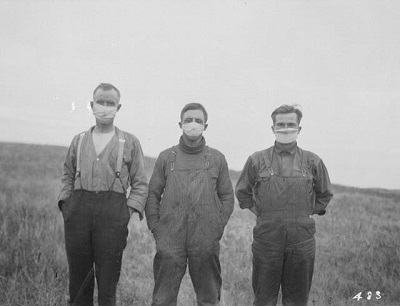Spanish Flu in Canada (1918-1920) National Historic Event
Victoriaville, Quebec

Men wearing masks during the Spanish flu epidemic
(© Bibliothèque et Archives Canada // Library and Archives Canada / PA-025025)
Address :
95 Notre-Dame Street West, Victoriaville, Quebec
Recognition Statute:
Historic Sites and Monuments Act (R.S.C., 1985, c. H-4)
Designation Date:
2018-02-27
Dates:
-
1918 to 1920
(Significant)
Other Name(s):
-
Spanish Flu in Canada, 1918-1920
(Designation Name)
-
Influenza virus 1918 A(H1N1)
(Other Name)
Research Report Number:
2017-07, 2022-CED-SDC-09
Importance:
International pandemic that led to the establishment of the federal Department of Health in 1919, making public health a responsibility of all levels of government
Plaque(s)
Existing plaque: 95 Notre-Dame Street West, Victoriaville, Quebec
This incurable form of influenza killed more than 50 million people worldwide, including nearly 50,000 Canadians. In the autumn of 1918, the first civilian cases of the Spanish Flu in Canada were reported at the Collège commercial after thousands of visitors came to Victoriaville for the Eucharistic Congress. The lack of national coordination between military, political, and public health authorities hindered the efforts of doctors, nurses, and volunteers. This pandemic led to the establishment of the federal Department of Health in 1919, which made public health a responsibility of all levels of government.